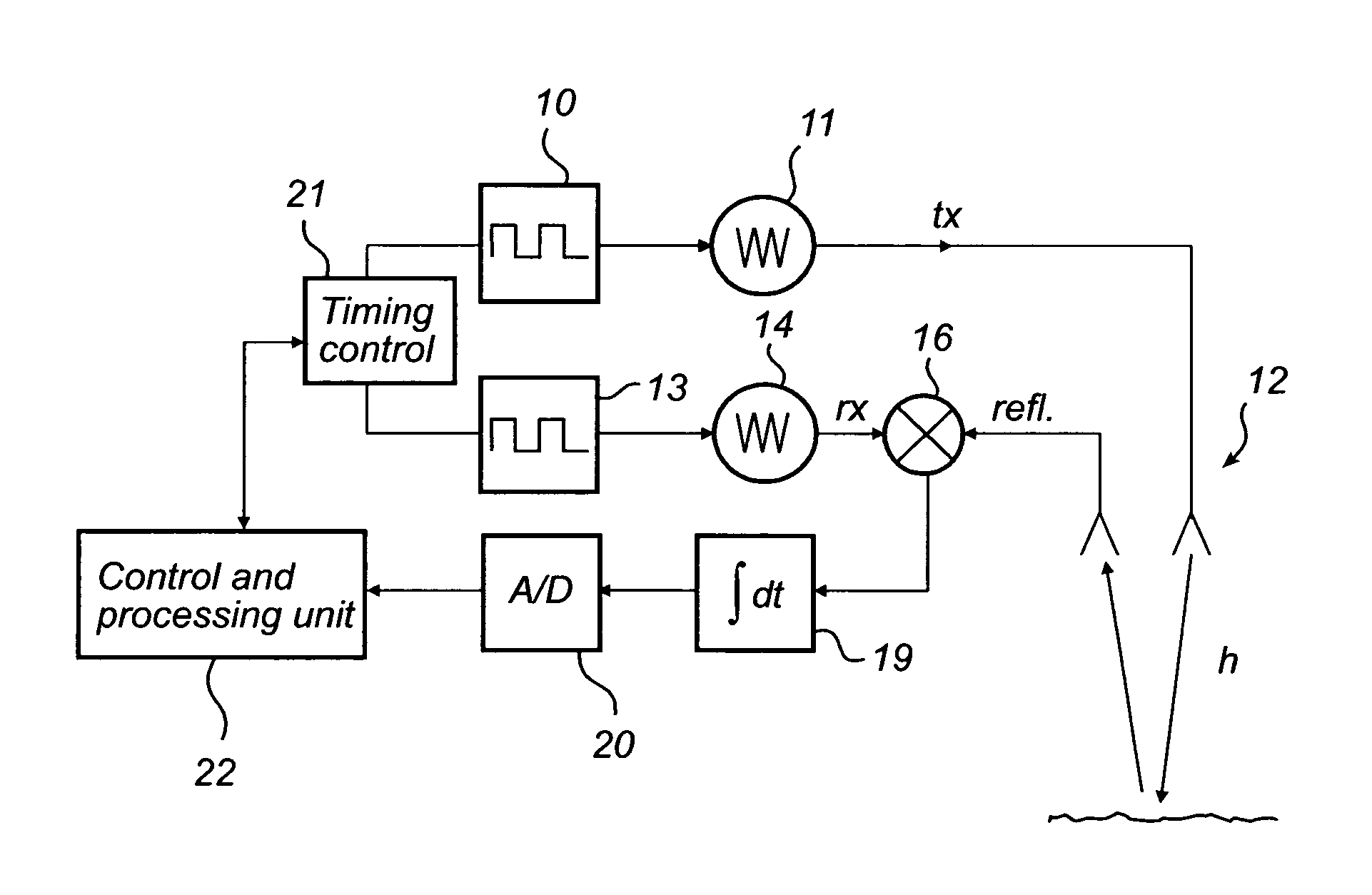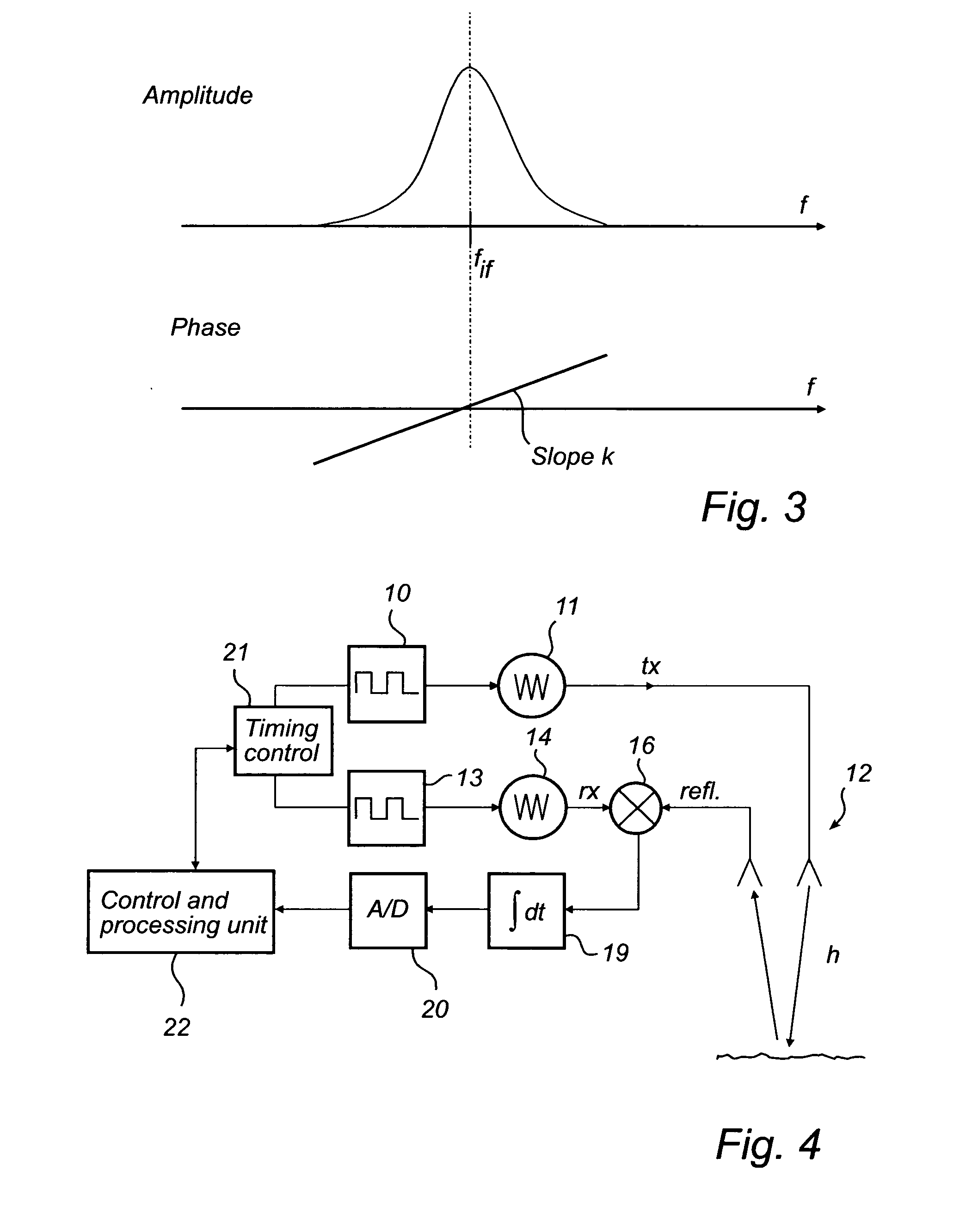Pulsed radar level gauging with relative phase detection
a technology of relative phase delay and radar level gauge, which is applied in the direction of level indicators by physical variable measurement, liquid/fluent solid measurement, engine lubrication, etc., can solve the problem of small waveform shift very difficult to detect, amplitude detection as the only method for identifying the location of echo in the tank signal suffers from limitations, and the resolution of a/d converter needs to be relatively high, so as to achieve accurate detection of surface echoes
- Summary
- Abstract
- Description
- Claims
- Application Information
AI Technical Summary
Benefits of technology
Problems solved by technology
Method used
Image
Examples
Embodiment Construction
[0040]FIG. 2 shows a schematic model of a radar level gauging system according to an embodiment of the present invention.
[0041]A transmitter 1 produces a train of identical pulses si(t) that is transmitted via an unknown channel 2 with impulse response h(t). A copy of the transmitted pulse train is transmitted via a reference channel 3 having an impulse response g(t) representing a known and varying relative time delay t0+τi i.e. gi(t)=δ(t−(t0+τi)).
[0042]The two inputs are cross correlated (i.e. mixed 4 and integrated 5) to form a cross correlated signal c(t) and finally Fourier transformed 6 as a function of the minimum delay t0. The result out of the Fourier Transform can be written as:
C(ω)=|S(ω)|2H(ω) Eq 1
[0043]Equation 1 represents the power spectral density |S(ω)|2 of the transmitted signal multiplied with the Fourier Transform H(ω) of the unknown channel. For the special case when the unknown channel is a delayed response, h(t)=δ(t−tch), the expression becomes
C(ω)=|S(ω)|2 exp...
PUM
 Login to View More
Login to View More Abstract
Description
Claims
Application Information
 Login to View More
Login to View More - R&D
- Intellectual Property
- Life Sciences
- Materials
- Tech Scout
- Unparalleled Data Quality
- Higher Quality Content
- 60% Fewer Hallucinations
Browse by: Latest US Patents, China's latest patents, Technical Efficacy Thesaurus, Application Domain, Technology Topic, Popular Technical Reports.
© 2025 PatSnap. All rights reserved.Legal|Privacy policy|Modern Slavery Act Transparency Statement|Sitemap|About US| Contact US: help@patsnap.com



